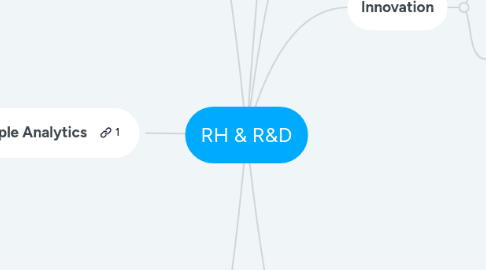
1. MD R&D OKR
2. People Analytics
2.1. Compensation plan
2.2. Run an employee survey
2.3. Structure and check for pay equity
2.3.1. Pay process
2.3.1.1. What roles exit in the organization
2.3.1.2. What these jobs are worth in the market
2.3.1.3. Specific pay targets with wide pay ranges
2.3.1.4. Reference your pay structure every time you assign pay
2.3.2. Pay equity analysis
2.3.2.1. Understand the legal contexte
2.3.2.2. Define the questions you want to answer
2.3.2.3. Standardize your compensation variable
2.3.2.3.1. Convert all compensation into one type of currency
2.3.2.3.2. Apply a logarithmic transformation to the compensation variable
2.3.2.3.3. Determine how to reliably detect if there any differences
2.3.2.4. Analysis
2.3.2.4.1. Build a clean data set
2.3.2.4.2. Identify substantially similar jobs
2.3.2.4.3. Check for multicollinearity
2.3.2.4.4. Run a regression anaylysis
2.3.2.4.5. Test for significance
2.3.2.4.6. Check your work
2.3.2.4.7. Summarize your results
2.4. Identify and define your metrics
2.4.1. Effectiveness
2.4.2. Efficiency
2.4.3. Experience (individual experience)
3. Teams
4. Goal Setting
4.1. MD OKR
4.1.1. OKRs are not synonymous with employee evaluations
4.1.2. OKRs are not a shared to-do list
4.1.3. Don't use Business-as-usual OKR
4.1.4. It’s possible that a team’s OKRs will focus on just one of the organizational OKRs
4.1.5. Video how Google uses OKR
4.2. How OKRs fuel innovation
4.2.1. Explicitly identifying what you’re NOT doing
4.2.2. Aligning teams on what’s most important to the company
4.2.3. Establishing metrics to measure progress
5. Hiring
5.1. Train the interviewers
5.2. Review resumes
5.3. Questions generator from LinkedIn
6. Innovation
6.1. Practice innovation with design thinking
6.1.1. Build creative capacity
6.1.1.1. Empathy
6.1.1.2. Expansive thinking
6.1.1.3. Experimentation
6.1.2. Design sprint
6.1.2.1. Understand
6.1.2.2. Sketch
6.1.2.3. Decide
6.1.2.4. Prototype
6.1.2.5. Validate
6.2. Foster an innovative workplace
6.2.1. Attributes
6.2.1.1. Shared vision
6.2.1.2. Autonomy
6.2.1.3. Intrinsic motivation
6.2.1.4. Risk-taking
6.2.1.5. Connection & collaboration
6.2.2. Encourage ownership and curiosity
6.2.2.1. Arm people with information
6.2.2.2. Encourage curiosity and solicit questions
6.2.2.3. Give people an avenue to explore their ideas
6.2.2.4. Foster a culture of learning
6.2.3. Lead by example
6.2.3.1. Don't default to assigning tasks based on availability
6.2.3.2. Set goals for your people , then get out of the way
6.2.3.3. Avoid false deadlines
6.2.3.4. Don't stick to the same agreeable team
6.2.3.5. Check your critical attitude
6.2.3.6. Discourage silos, politics and gossip
7. Managers
7.1. Case study
7.2. Manager - Managee
7.2.1. Set and communicate a team vision
7.2.2. Stay technical and result-focused
7.2.3. Care professionally and personally for your team
7.2.3.1. Career conversation worksheet
7.2.3.1.1. Coach managers to coach
7.2.3.2. Compassion
7.2.3.2.1. Ask how you can help, and don't assume you know what's wanted
7.2.3.2.2. Look for commonalities with your team members
7.2.3.2.3. Encourage cooperation instead of competition in your team
7.2.3.2.4. Cultivate genuine curiosity about the invidividuals on your team
7.2.3.2.5. Lead by example, treating others with compassion is contagius
7.2.3.2.6. Be mindful of boundaries; avoid being an emotional sponge
7.2.3.3. Personal life
7.2.3.3.1. "One Simple Thing"
7.2.4. Empower your team
7.2.4.1. Do not micromanage
7.2.4.2. Balance giving freedom with being available for advice
7.2.4.3. Make it clear they trust their team
7.2.4.4. Advocate for the team in the wider organization
7.3. Manager's Manager
7.3.1. Identify what makes a great manager
7.3.1.1. Give feedback to managers
7.3.1.1.1. Tool for Manager Feedback Survey
7.3.2. Develop and support managers
